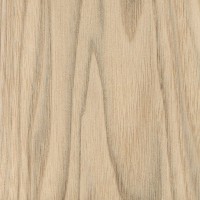 |
Common Name(s): Butternut, White Walnut Scientific Name: Juglans cinerea Distribution: Eastern United States Tree Size: 65-100 ft (20-30 m) tall, 2-3 ft (.6-1 m) trunk diameter Average Dried Weight: 27 lbs/ft3 (435 kg/m3) Specific Gravity (Basic, 12% MC): .36, .43 Janka Hardness: 490 lbf (2,180 N) Modulus of Rupture: 8,100 lbf/in2 (55.9 MPa) Elastic Modulus: 1,180,000 lbf/in2 (8.14 GPa) Crushing Strength: 5,110 lbf/in2 (35.2 MPa) Shrinkage: Radial: 3.4%, Tangential: 6.4%, Volumetric: 10.6%, T/R Ratio: 1.9 |
Color/Appearance: Heartwood is usually a light to medium tan, sometimes with a reddish tint. Growth rings are darker and form fairly distinct grain patterns. Sapwood is a pale yellowish white.
Grain/Texture: Grain is typically straight, with a medium to coarse texture. Silky natural luster.
Endgrain: Semi-ring-porous; medium-large earlywood pores gradually decreasing to small latewood pores; solitary and radial multiples of 2-3; tyloses occasionally to abundantly present; growth rings distinct; rays barely visible without lens; parenchyma banded (marginal), apotracheal parenchyma diffuse-in-aggregates (sometimes very faint and barely visible even with lens).
Rot Resistance: Decay resistance is rated as moderately durable to non-durable.; also susceptible to insect attack.
Workability: Butternut is easily worked with both hand and machine tools. However, being so soft, Butternut has a tendency to leave some fuzzy surfaces after planing or sanding, and sharp cutters and fine-grit sandpaper is recommended. Butternut glues, stains, and finishes well.
Odor: Butternut has virtually no scent or odor when being worked.
Allergies/Toxicity: Besides the standard health risks associated with any type of wood dust, no further health reactions have been associated with Butternut. See the articles Wood Allergies and Toxicity and Wood Dust Safety for more information.
Pricing/Availability: Available as lumber and carving blanks. Prices are in the mid range for a domestic hardwood.
Sustainability: This wood species is not listed in the CITES Appendices or on the IUCN Red List of Threatened Species. However, many Butternut trees in North America are currently afflicted by a fungal disease (Sirococcus clavigigenti-juglandacearum) known as Butternut canker. The rapid decline of Butternut has prompted the US Fish and Wildlife Service to list it as a species of federal concern. The tree is protected in Canada as well.
Common Uses: Veneer, carving, furniture, interior trim, boxes, and crates.
Comments: Sometimes called White Walnut, Butternut is indeed closely related to Black Walnut. While the difference is not black and white, the wood of Butternut is considerably lighter-colored than Black Walnut, as well as being very soft and lightweight.
Butternut trees can be distinguished from Black Walnut by looking at its fruit: Butternut’s fruit is more oblong or oval shaped, while Walnut is nearly round; (see illustration below). The commercial potential of Butternut’s edible fruit (nuts) is generally regarded as being more valuable than its lumber. (Butternuts are not related to Butternut squash, which comes from an unrelated plant—Cucurbita moschata.)
The trunks of Butternut trees are fluted, which is sometimes still evident in processed lumber—the growth rings in the endgrain may appear more polygonal and faceted rather than perfectly circular.


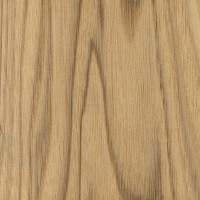
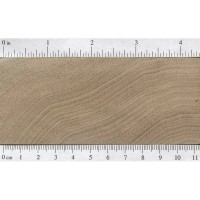
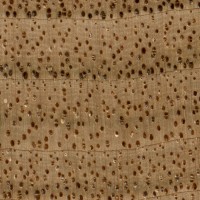

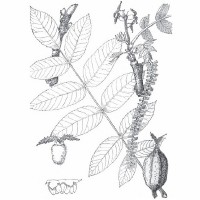



Here’s a short scale kid-sized guitar with a butternut body. It is finished with Tru-Oil. The picture doesn’t do it justice, but the wood has an attractive silky sheen under this finish. I had minor problems with tearout during pattern routing. The pores took 4 coats of grain filler. This particular piece, from a huge old tree, was 32 lb/cu ft and seemed a bit harder than the stated 490 Janka rating.
I just finished turning this bowl today. Not seen this species before. A one off blank that I can’t remember where it came from, but was from a local Colorado tree, I think. After browsing the database, I think is is Butternut. What do you think? (see attached photos – I hope!) Thanks,
KM
Photos didn’t come through — they are possibly too large?
Eric,
Sorry for the delay. If detail is not sufficient, I can try a larger file size. Thanks for your help.
Keith Motzner
I agree the wood does bear a pretty strong superficial resemblance to butternut. However, the endgrain seems to indicate otherwise. It looks like a type of mesquite to me. Butternut is a pretty soft and lightweight wood, is this wood fairly heavy?
Eric,
One of the reasons I was thinking that this was Butternut was not only the color and grain, but also the way it worked on the lathe. Very similar to the weight and density of Walnut but lighter in color. I would say that this wood is only slightly lighter in weight, but not softer than local (Colorado) Walnut that I have turned in the past.
Thanks for your input. I will be comparing to the info on Mesquite that you have in the database. Thanks so much for your extensive work on this invaluable resource.
KM
I’ve worked with Butternut for a long time making different items from it including pens, gun stock accents, knife scales, bowls, and boxes, etc. It’s color looks like the heartwood of a yellow poplar, not so much green but more yellow, mixed with tans and cream colors. It has the identical grain figure that is obviously Black Walnut with burls, curls and feather grain. I have found it soft but machines easily without scuffs and ragged edges. I have checkered it to 18 LPI without knocking off diamonds. Butternut sands to a smooth surface and finishes easily just like Black… Read more »
In my opinion, butternut looks more like red oak.
I got these pics also
I have seen many diff butternut trees ,each looked a tad different. Wondering if this was one
Hello Justin,
I can’t tell from the photo. Would you be able to get some photos of some twigs from the tree? Twigs provide the best means of distinguishing this species from Japanese walnut/heartnut and their hybrids.
Is this butternut
No, it looks like a softwood to me.
Its solid and heavy , hard to cut , I havent come across this before , driving me nuts ?.
Thank you for taking the time to respond
Butternut is light and extremely easy to cut. Your pictures look more like cherry to me but I can only be certain it’s not butternut
Unfortunately not just the slab ,
Cherry
Definitely butternut, see the red ring inside the bark.